Breakthrough Strategies Transforming Online Fashion Retail: A Case Study on REVOLVE
By Anne McCarthy
In 2003, two friends, Michael Mente and Mike Karanikolas, founded the e-commerce fashion company Revolve Group (NYSE:RVLV), despite not knowing anything about fashion. But they did know a great deal about tech trends and data analysis, which has helped REVOLVE thrive.
From Revolve Group emerged companies REVOLVE and FWRD. REVOLVE has a huge range of brands and sells apparel, accessories, shoes, and beauty products. Its target demographic includes Millennial and Gen Z shoppers. FWRD is REVOLVE’s sister site and a luxury-tailored boutique with clothing at a higher price point.

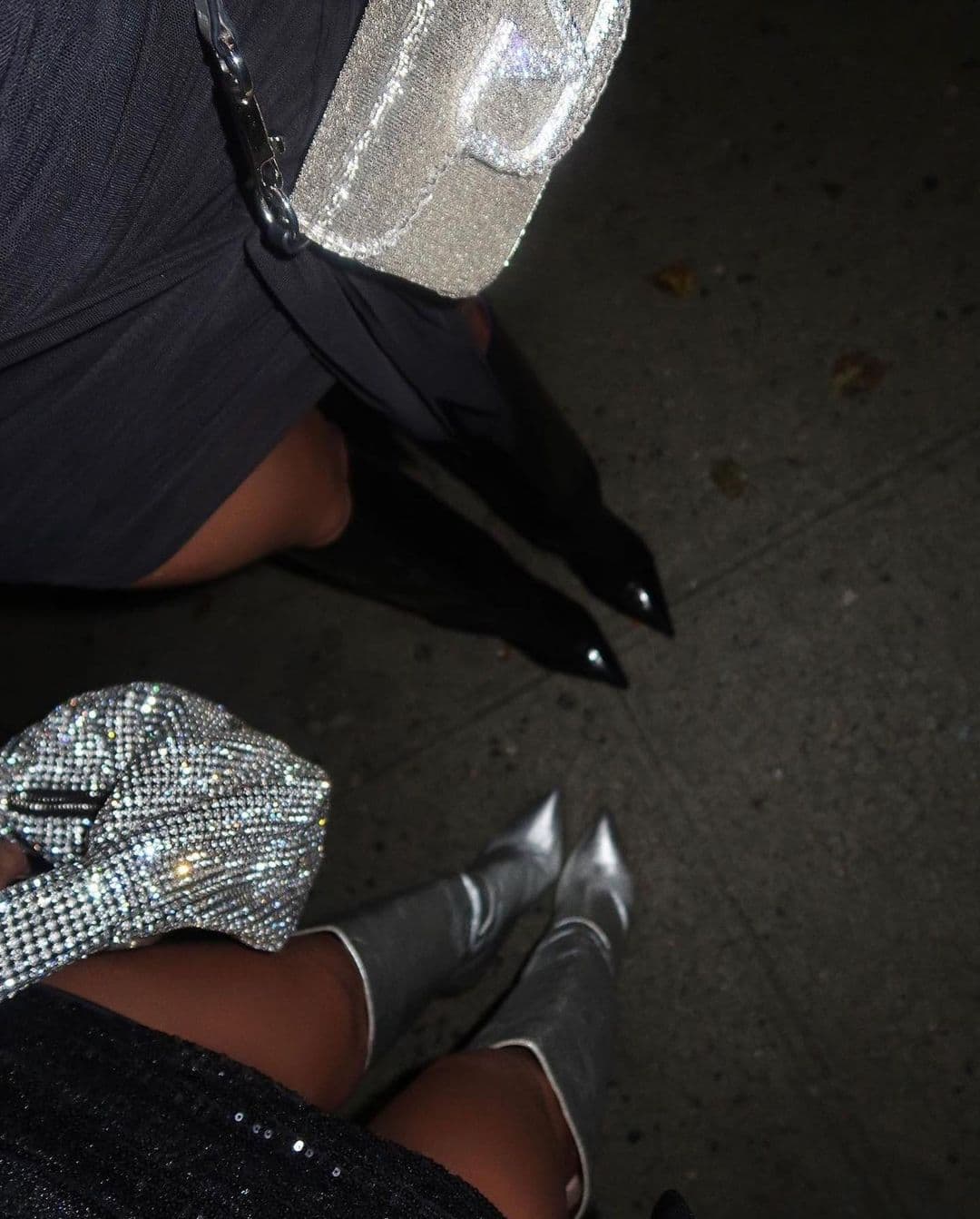
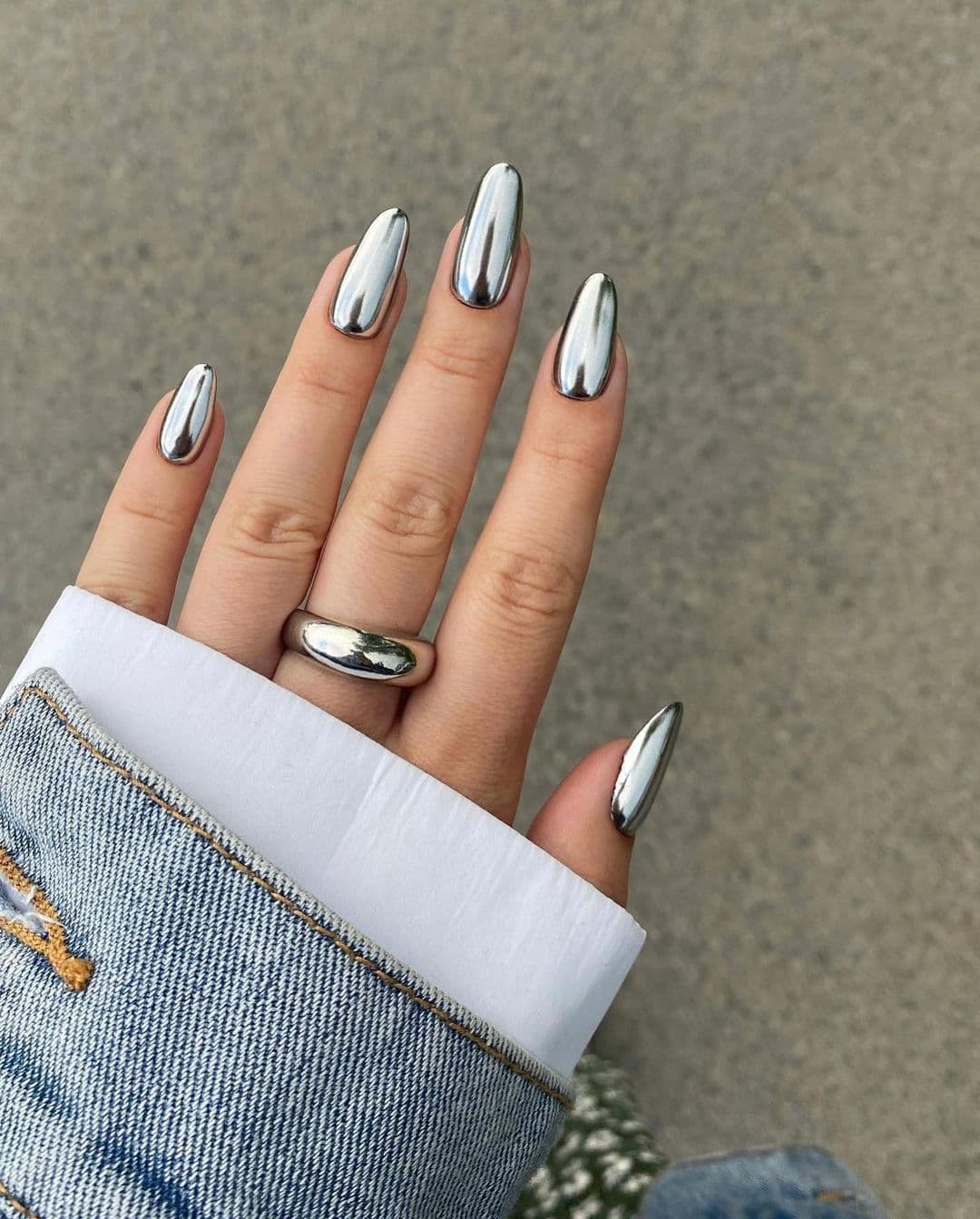

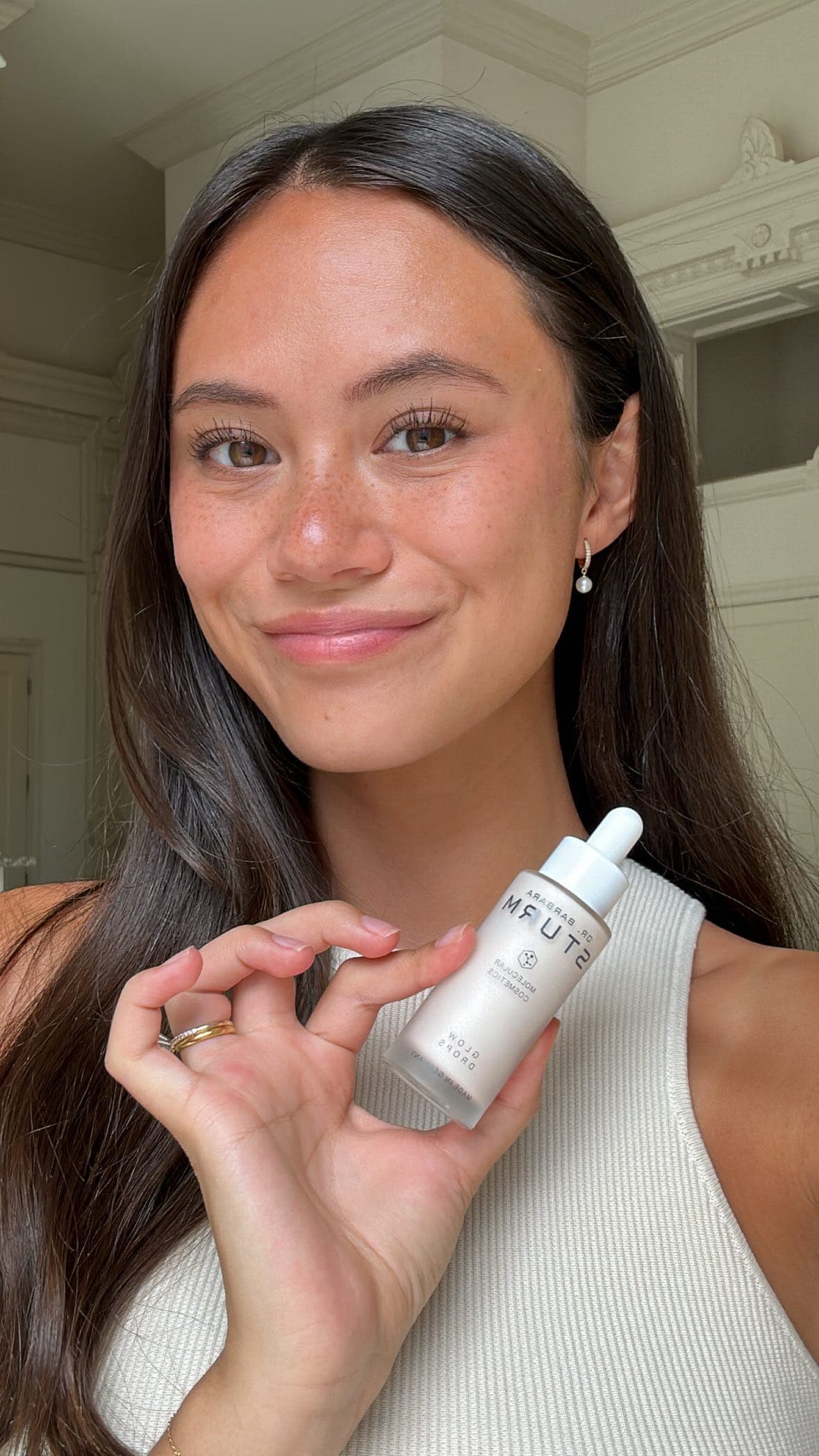
This – starting a fashion company while having no knowledge of fashion – sounds like a recipe for disaster. However, it proved to be a recipe for success, as REVOLVE became one of the fastest-growing clothing companies with an e-commerce model.
REVOLVE has exploded in popularity thanks to its use of tech and its smart marketing tactics. What can fashion companies learn from REVOLVE’s approach? A lot, it turns out.
Key Takeaways
–REVOLVE is a one-stop online shop with a huge number of different brands like BCBG, Free People, Prada, and many more. Its sister site, FWRD, is devoted to luxury brands, from Loewe to La Perla and countless others.
–Part of REVOLVE’s market power lies in its growth potential, despite the financial challenges of 2022 and 2023, and its ability to weather market storms, like a global pandemic, and also thrive in them. Revolve Group was valued at $1.5 billion in 2019, around the time it went public.
–REVOLVE continues to make small adjustments, which could yield significant results, like its recent use of purchase provider Bolt, which increased sales.
–REVOLVE relies heavily on partnering with social media and model influencers, like Kendall Jenner. Engaging with influencers for marketing campaigns drives traffic to the site, piques interest, and generates buzz.
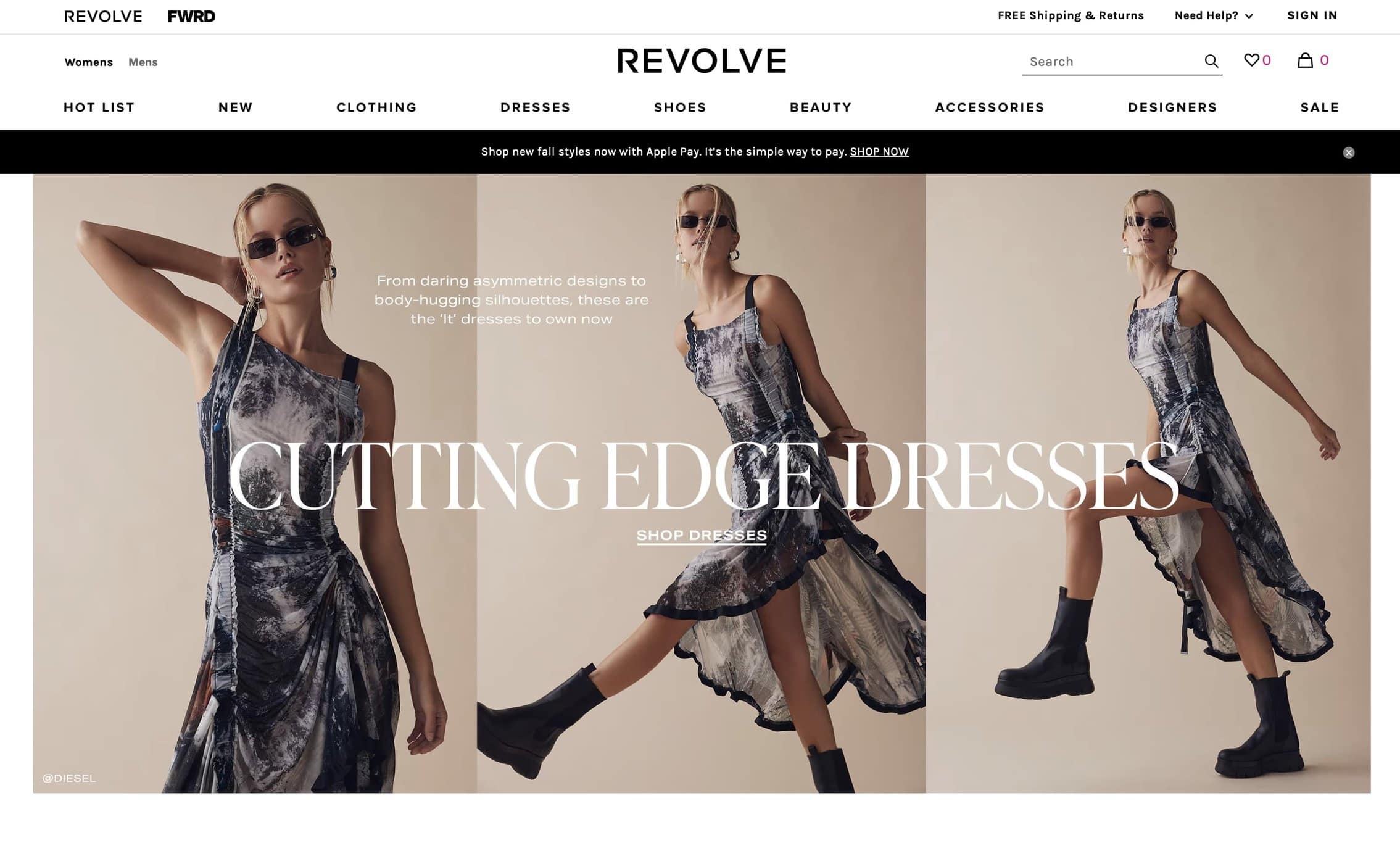

REVOLVE’s Current Financial Picture
REVOLVE, which is under the umbrella of Revolve Group, which has two online clothing companies, operates in the U.S. and also internationally. In 2023, over 80% of its revenue came from the U.S.
By 2019, Revolve Group was valued at $1.5 billion around the time it went public. And in 2019, REVOLVE boasted approximately $600 million in sales.
Today, the company is weathering some slight downturns in 2023 (and in 2022), like a decrease in gross margins and revenues. However, it remains a popular choice for savvy, fashion-focused consumers. Seeking Alpha recently recommended REVOLVE Group stock as a strong buy, given its “long-term growth story.”
Like many other online retailers, REVOLVE saw a considerable boost from the Covid-19 pandemic, when shoppers were going online more than ever before.
How does it Work?
REVOLVE is a one-stop-shop for high fashion brands, and REVOLVE’s own in-house brands, which contributed to over 20% of the company’s revues in 2022.
Brands sold online by REVOLVE include well-known labels like 7 for All Mankind, ALLSAINTS, BCBG, Free People, Steve Madden, The Northface, Zac Posen, Prada, and many more.
Like any e-commerce company, consumers make their purchases online, and REVOLVE’s delightfully seamless and hassle-free returns process makes it a standout compared to other online retailers.
Small Changes to Create Long-term Company Health
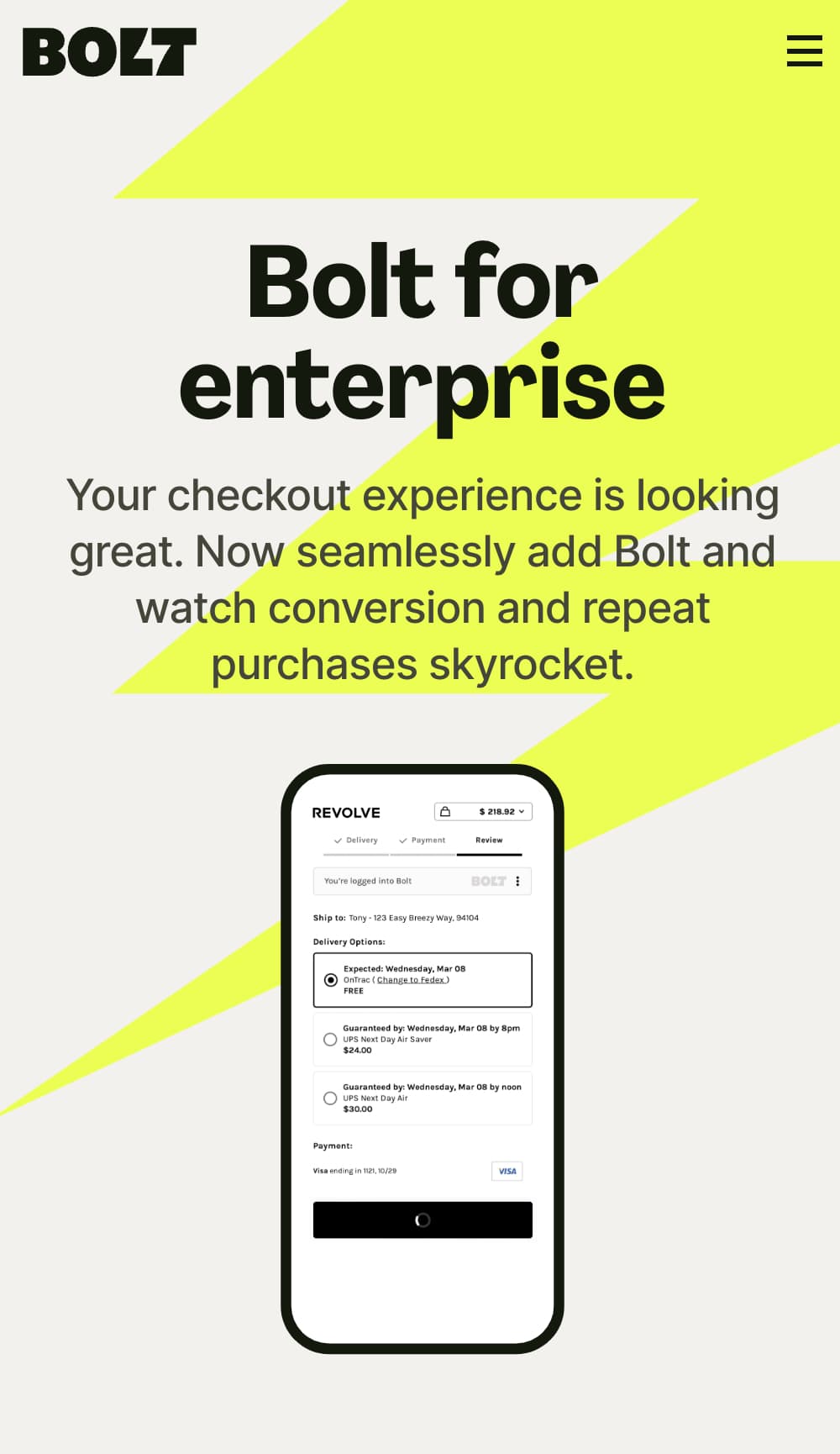
Despite some challenges in 2022 and 2023, REVOLVE is recommended as a stock to buy, thanks to its growth potential, seemingly strong ability to weather storms (and thrive in them), like the pandemic, and its ability to innovate and make smart adjustments.
Women’s Wear Daily reported this month that REVOLVE’s use of Bolt, a one-click checkout provider company, has helped drive online conversions, increasing sales by 4%. This fact speaks to the power of small tweaks for fashion companies. The company’s use of user-friendly Bolt led to a faster and easier checkout process for consumers. This meant it also removed barriers of entry for online consumers during their shopping experience; barriers which might otherwise lead to an online shopping bag collecting digital dust.
REVOLVE’s Marketing Approach & Partnering with Influencers
REVOLVE has, by and large, forgone traditional advertising in favor of putting its marketing money power towards partnerships with thousands of Instagram influencers. Even major influencers and models, like Kendall Jenner, have been tapped for their social media superpowers to help elevate the brand.



Kendall Jenner from FWRD.com | Photography by Yulia Gorbachenko, Styling by Malina Joseph Gilchrist
Jenner, who regularly walks at fashion weeks around the world, has been featured wearing REVOLVE’s own brands and the high-fashion labels sold by the online site. REVOLVE leans heavily on social media, especially Instagram, where the company has over 5.5 million followers on the REVOLVE Instagram account. REVOLVE also hosts social events for its influencer partners, and in 2017 began hosting an awards ceremony for its influencers, which included categories like Best Beauty Influencer.
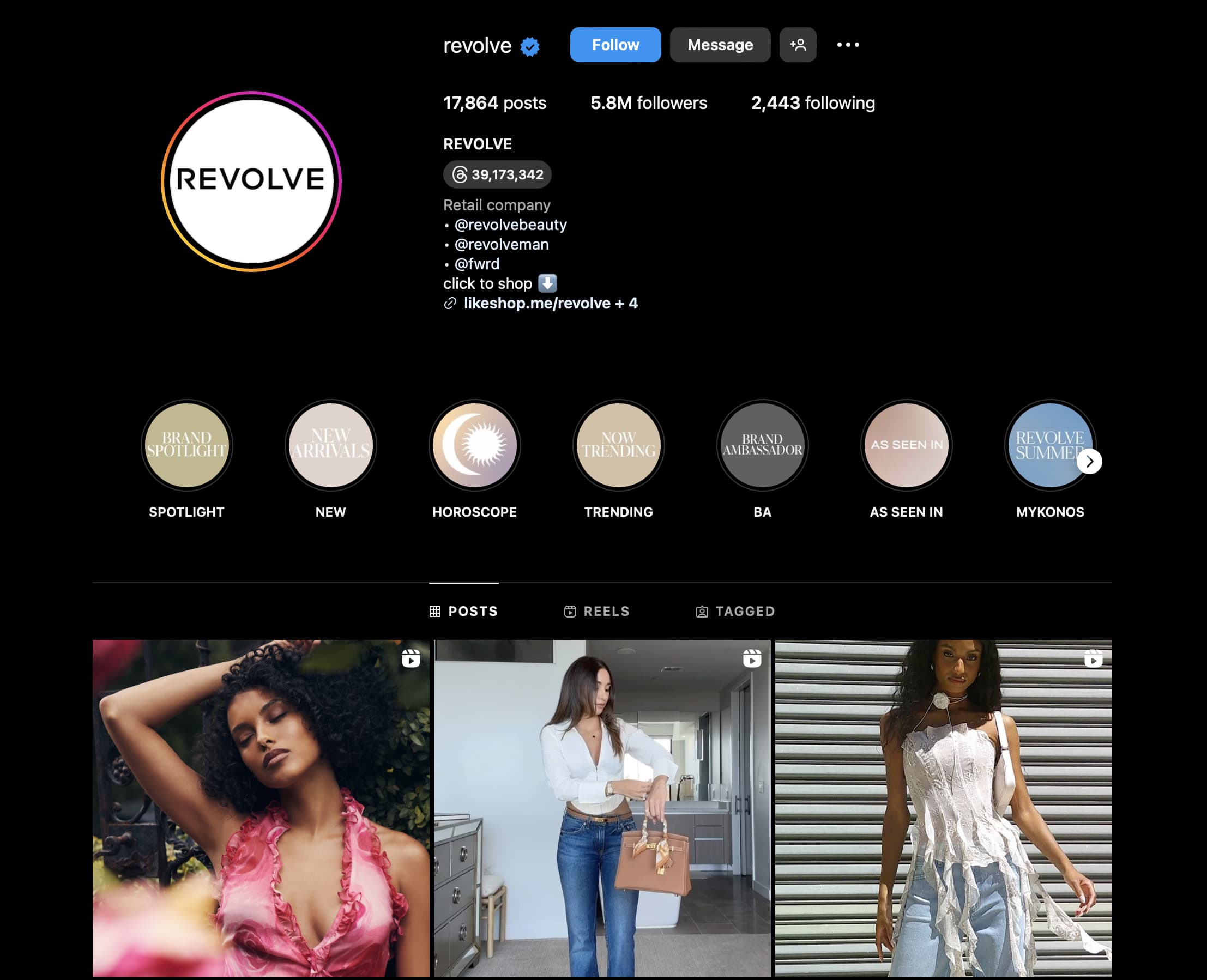
REVOLVE’s publicity team is also doing a standup job by getting REVOLVE products featured in high-circulation publications like Us Weekly, which appeal to a wide demographic, from the Business Class passenger killing time at an airport Polaris lounge to a college student procrastinating on studying for exams. The magazine, in 2022, had an average audience of 29.48 million. A recent Us Weekly feature, “Designer Deals! 11 Fall Fashion Finds From REVOLVE on Sale for Up to 79% Off,” highlights the attractive price point and seasonal marketing efforts of the company.
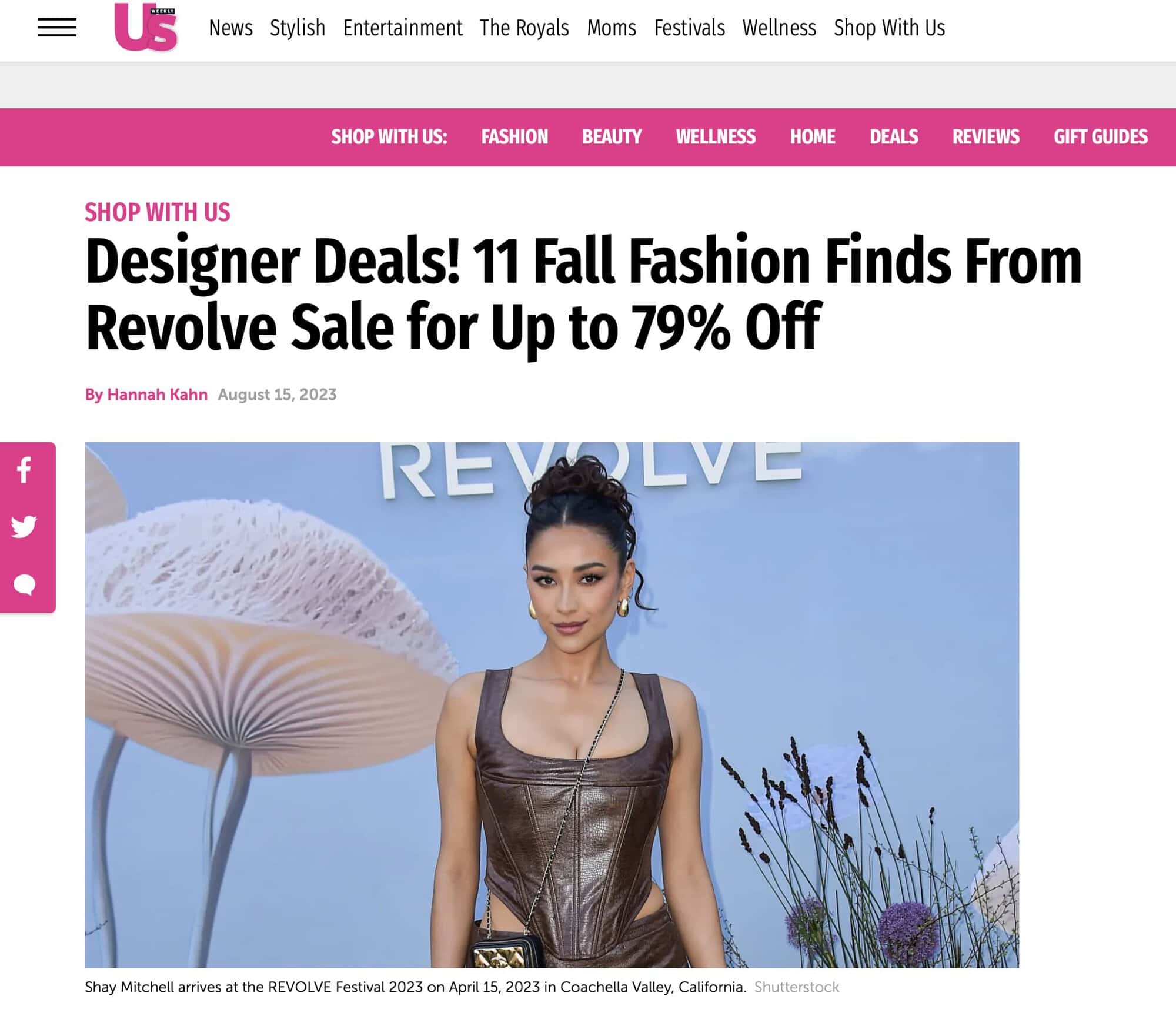
It’s inspiring to see fashion companies like REVOLVE that are paving the way and creating a better, smarter, more seamless shopping experience for the fashion lovers of the world. REVOLVE has gifted other companies with a strong marketing and sales model from which to, well, model and emulate as the fashion world – like the regular world – moves increasingly online in this digital age of 2023.
